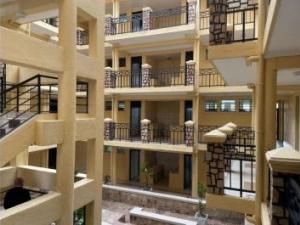
Behind Rwanda’s decision to accommodate asylum seekers from UK in ‘One Dollar Campaign’ building
Rwanda and the United Kingdom (UK) signed Migration and Economic Development Partnership last week that will see Rwanda hosting asylum seekers from the country illegally.
Under this program, the UK will provide an upfront investment of £120 million to fund invaluable opportunities for Rwandans and migrants including secondary qualifications, vocational and skills training, language lessons, and higher education.
These asylum seekers from African countries and others outside the continent will be treated decently like Rwandans upon arrival. It is expected that those willing to return to their mother lands will be helped to do so.
Unlike asylum seekers and refugees from Libya living in Gashora Transit Camp, the ones from UK will be housed in specially-selected accommodation facilities where they will wait for asylum claims to be processed.
Following agreements between both countries on 14th April 2022, different media houses and individuals majority of whom being from the western part of the world relentlessly criticized the deal for personal reasons.
Sources reveal that Hope House, in Gasabo District is one of buildings expected to accommodate these asylum seekers.
It is said that two more buildings will be built in coming years for the same purpose.
The Mirror media house recently ran a story indicating that the building known as ‘One Dollar Campaign Project’, normally accommodates orphans who survived the 1994 Genocide against the Tutsi. The publication however distorted the truth explaining that beneficiaries were booted out from the building to make a way for refugees and asylum seekers.
The media house also wrote that some beneficiaries claimed that they have nowhere to stay after they were given a tight deadline to have left the building.
The Mirror’s article supports reactions of individuals from the UK and others from Europe expressing frustration over the country’s approach to resolve the issue of asylum seekers and refugees.
One of these people who opposed the decision is the leader of the Anglican church who strongly criticized the British government’s plan to put some asylum-seekers on one-way flights to Rwanda, saying “sub-contracting out our responsibilities” to refugees can’t stand up to God’s scrutiny.
According to the Washington Post, the Archbishop of Canterbury Justin Welby made the direct political intervention in his Easter Sunday sermon at Canterbury Cathedral in southeast England, saying there are “serious ethical questions about sending asylum-seekers overseas.”
He said “sub-contracting out our responsibilities, even to a country that seeks to do well, like Rwanda, is the opposite of the nature of God who himself took responsibility for our failures.”
Serving the right purpose
The major purpose of Hope House was to provide vulnerable orphans of the 1994 Genocide against the Tutsi with shelter during holidays and leave the building after graduation as they can apply for jobs and live without dependence.
This means, the facility was used as a transit for beneficiaries before starting to live on their own.
The building used to accommodate AERG students from secondary schools and universities. AERG (Association des Etudiants et Eleves Rescapes du Genocide) is a body that brings together genocide survivors studying in university and secondary schools.
The Spokesperson of the Government of Rwanda, Yolande Makolo recently reacted to the article run by The Mirror via Twitter handle saying that “the Genocide against the Tutsi ended 28 years ago & this hostel has been almost empty for the last 5 years, the last few remaining tenants are graduating & being facilitated to move to a new life.”
The Coordinator of AERG, Audace Mudaheranwa has told IGIHE that Genocide orphans have been accommodated in the building on rotational basis where few beneficiaries remain in the building.
“There are few beneficiaries who are also in the phase of making their way out. There are processes in place to help them move to a new life. We already had the program before the migration partnership,” he said.
Mudaheranwa revealed that the building has been previously accommodating only 22 individuals yet it has the capacity for 200 people.
“We had talked to the remaining few beneficiaries, showed how the building is large enough. They told us that they were ready to seek shelters elsewhere. They are mature people who can receive support the same way it is extended to university graduates,” he noted.
Genocide orphans in Hope House are preparing to leave because they are mature people aged 29 and above who need to live on their own.
“They were not forced to leave because of refugees. We engaged with beneficiaries who suggested that we should help them to move to a new life if possible and get support their survival outside. They said that they were ready to leave the building so that it can be used for income generating activities whereby revenues can be used to support them and others,” said Mudaheranwa.
Today, the management of Hope House is being discussed to seek how it can be used appropriately.
The five-storey building constructed between 2010 and 2014 has all necessary equipment including beds.
It is built on 2000 square meters. Two individuals will share one room with separate beds.
Asylum seekers to be hosted at the facility will be fed thrice a day.
Hope House also has a large room that can serve as a refectory and multipurpose hall where asylum seekers will turn up for social interactions.
https://en.igihe.com/news/article/behind-rwanda-s-decision-to-accommodat...
